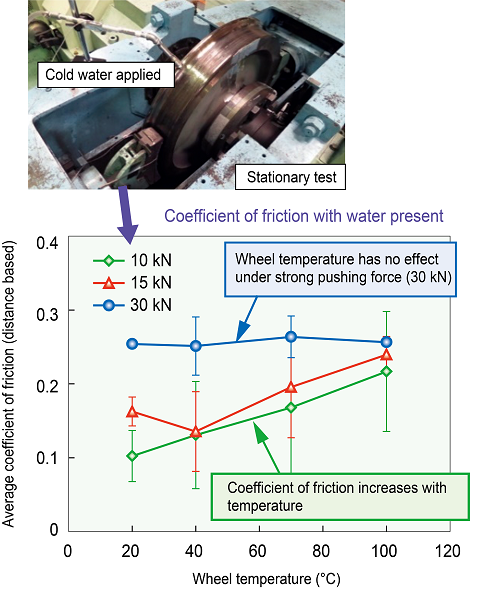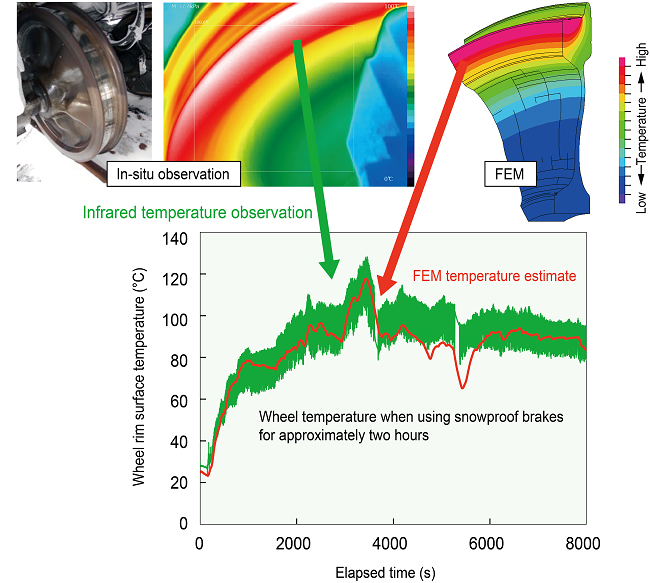6. Braking performance improvement under snow conditions by controlling wheel temperature using snowproof brake systems
Snow can affect the performance stability of tread brakes, sometimes causing trains to stop out of position at stations. We conducted bench tests to investigate the causes and mechanisms of the reduction in the friction coefficient of the brake blocks.
We found that for certain brake block materials, under a mild pushing force higher wheel tread temperatures lead to an increase in the coefficient of friction in the presence of cold water (see Figure 1).
This was found to be related to the pressure of the water entering the interface between the brake block and the wheel tread.
Snowproof brake systems that keep the brake blocks very lightly applied to the wheels during normal motion for the prevention of ingress of snow into the contact interface are implemented, but their potential influence on wheel temperature has not been considered.
If snowproof brakes make the wheels warmer, then we can expect to see improved braking performance due to the higher coefficient of friction of the brake blocks.
However this is true only up to a certain point—wheel temperatures in excess of 150°C can cause problems such as hollow wear on the wheel tread.
We designed a model for estimating wheel temperatures during snowproof braking operation with greater accuracy using the finite element method (FEM).
The validity of this methodology was confirmed by our observations (see Figure 2). Using FEM, we showed that by adjusting the air pressure of the snowproof brake we can keep wheel temperatures at a level that increases the coefficient of friction on the brake blocks and improves braking performance in snow conditions without any adverse impact on the wheels.
Other Contents
- 1. Rapid seismic damage estimation tool for large bridges
- 2. Seismic diagnostic for existing pile foundations affected by nearby excavation work
- 3. Earthquake countermeasure for poles on viaduct using stays and overhead wires
- 4. Rainfall-damaged embankment safety assessment tool
- 5. Creation of time-varying dynamic wind maps
- 6. Braking performance improvement under snow conditions by controlling wheel temperature using snowproof brake systems
- 7. Platform safety support device using side-mounted cameras
- 8. Silicon buffers on passenger cars provide longitudinal ride comfort and improved safety in train breakdown operations
- 1. Rapid seismic damage estimation tool for large bridges
- 2. Seismic diagnostic for existing pile foundations affected by nearby excavation work
- 3. Earthquake countermeasure for poles on viaduct using stays and overhead wires
- 4. Rainfall-damaged embankment safety assessment tool
- 5. Creation of time-varying dynamic wind maps
- 6. Braking performance improvement under snow conditions by controlling wheel temperature using snowproof brake systems
- 7. Platform safety support device using side-mounted cameras
- 8. Silicon buffers on passenger cars provide longitudinal ride comfort and improved safety in train breakdown operations


